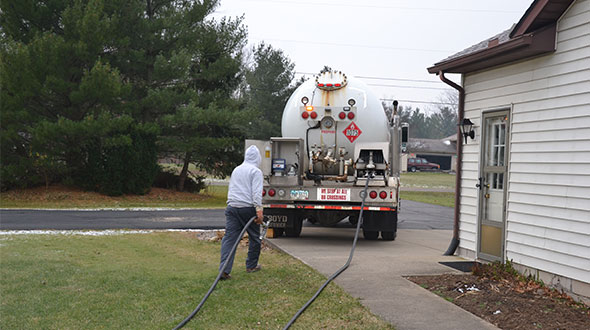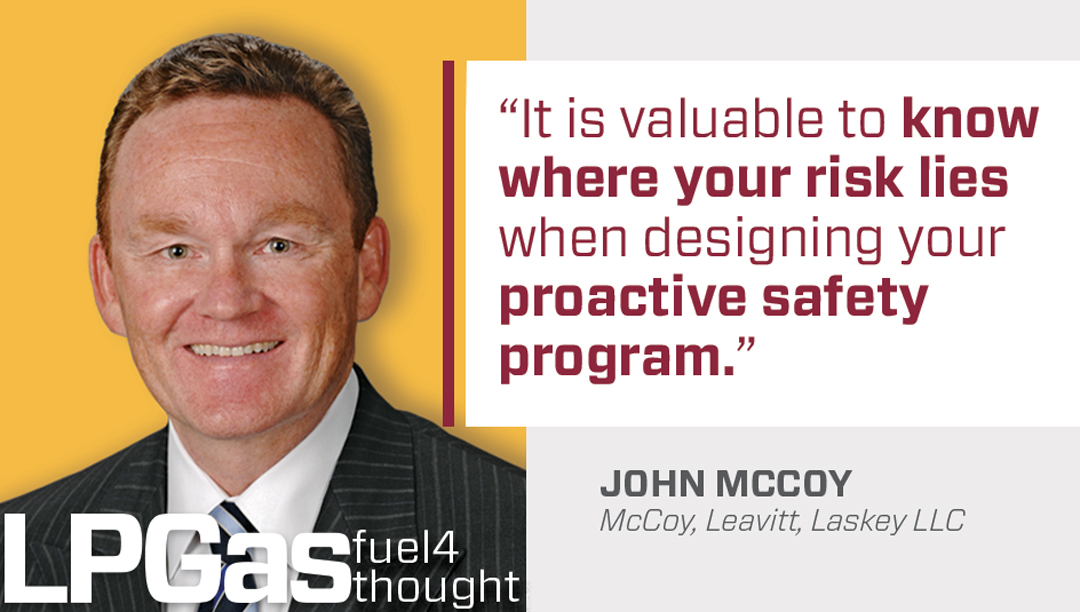Dealing with risk in propane delivery

Reducing your risk in the delivery of propane should always start with an understanding of where your risks lie. (Photo by LP Gas staff)
From time to time, I am asked to consult with clients about how to proactively reduce their potential risks in propane delivery. I am also asked if this industry is safe or works to be as safe as reasonably possible.
To the former question, I always ask clients what they are doing to minimize their potential risk. In response, I usually get a long list of training that is provided to their team. Most of it is focused on training their delivery and service personnel on how to deliver propane safely and how to safely service customer accounts.
More and more, marketers provide some training to customer service representatives (CSRs). But that training is often not well targeted at what the CSR encounters and what the CSR needs to do to enhance the safety of the company operations in the delivery of propane.
Reducing your risk in propane delivery should always start with an understanding of where your risks lie. I have learned from our firm’s experience and that of clients that handle this risk on a macro scale that 20-30 percent of actual claims involves interruption of service or what we refer to as out-of-gas situations. This 20-30 percent of claims results in about 80 percent of all dollars spent to settle claims or lawsuits. This amount includes what we refer to as defense costs as well as indemnity dollars. Defense costs include lawyer fees, expert fees, investigation fees and fees related to court costs. Indemnity dollars are the most significant expense and deal with payments to settle cases or to pay trial verdicts.
It is valuable to know where your risk lies when designing and implementing your proactive safety program. Said another way, if you could eliminate interruption of service or out-of-gas calls, you would theoretically remove 80 percent of your indemnity risk. Another approach would be to require that any interruption of service or out-of-gas call be given special treatment to do everything possible to resolve that situation with a robust confirmation that the system is safe when your team leaves the customer account.
CSRs often get first notice of these calls. They should be given a clear, written protocol of what to do and when. Various training services have developed training geared to CSRs and the situations they encounter when taking these calls. At minimum, they should alert management – or someone in delivery or service – immediately when these calls come in. This type of call should not end up in the filing bin for review hours or days later.
If a new account requires a pressure test and leak test, the entire install should be documented with completed forms and photographs that are placed in the customer file.

For systems where you take over an account and set a new tank but don’t change the customer system, the code only requires a leak test from the tank or somewhere outside the home, depending on how the system is set up. However, there is no downside to going inside, lighting appliances and checking to see if visible items are code compliant, such as manual shut-off valves.
For customer-owned tanks, the issue can be more difficult. In these cases, I recommend that you require permission to document the system prior to delivery of gas to the tank. As with any documentation, you will want written and photographic documentation.
Any documentation of new accounts or accounts that have an out of gas or interruption of service need to be examined by someone other than the person who handled the call – preferably by someone in management.
With this being the most significant area of indemnity risk to marketers, I recommend doing more than the code requires in these situations. Eighty percent of your indemnity dollars are spent on these claims. They usually involve burn injuries, death and property damage. Each time you conduct a more thorough inspection of the installation, you are reducing your risk that a claim will occur. You can fix the code violation. You can red tag unsafe appliances. You can decide to lock out the tank until the situation is remedied.
Being proactive is a safe practice. It is a practice that customers will see as laudatory.
John V. McCoy is with McCoy, Leavitt, Laskey LLC. His firm represents industry members nationally. He can be reached at jmccoy@MLLlaw.com or at 262-522-7007.
















